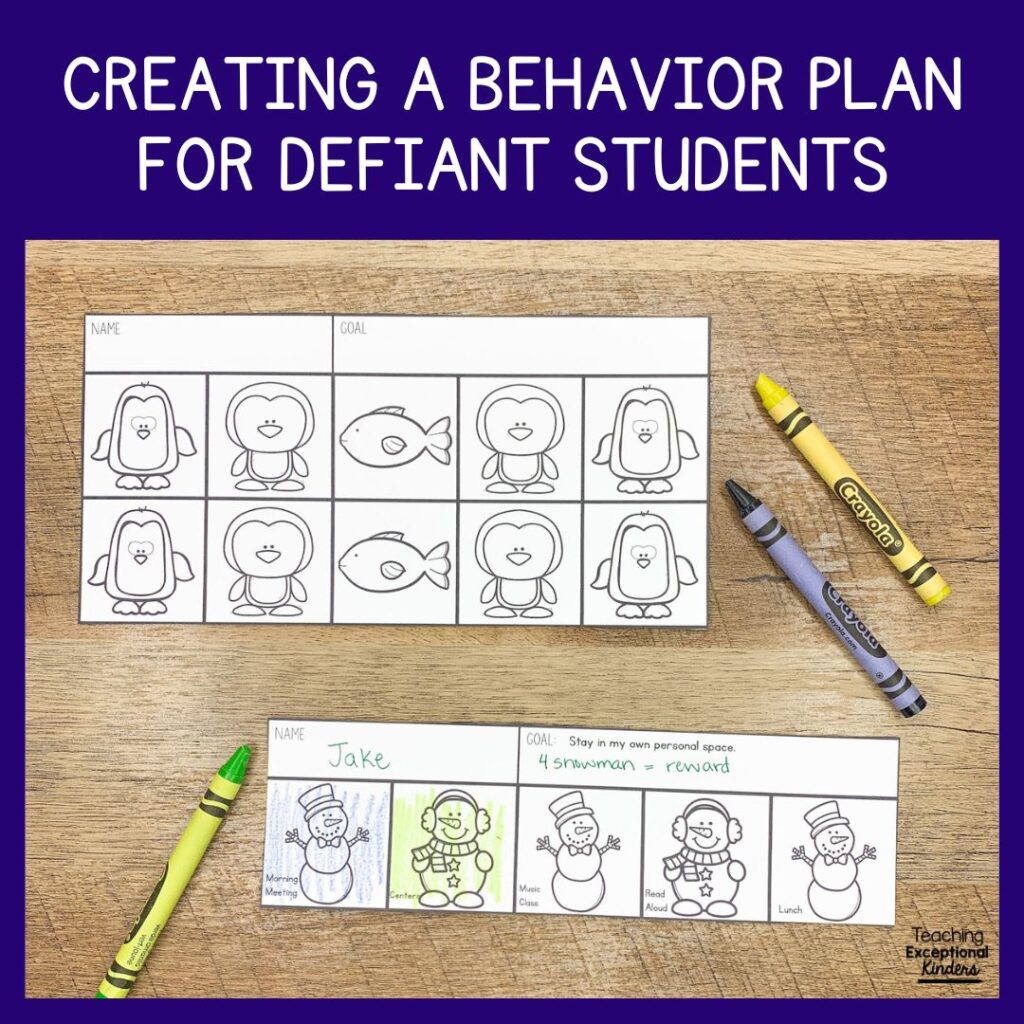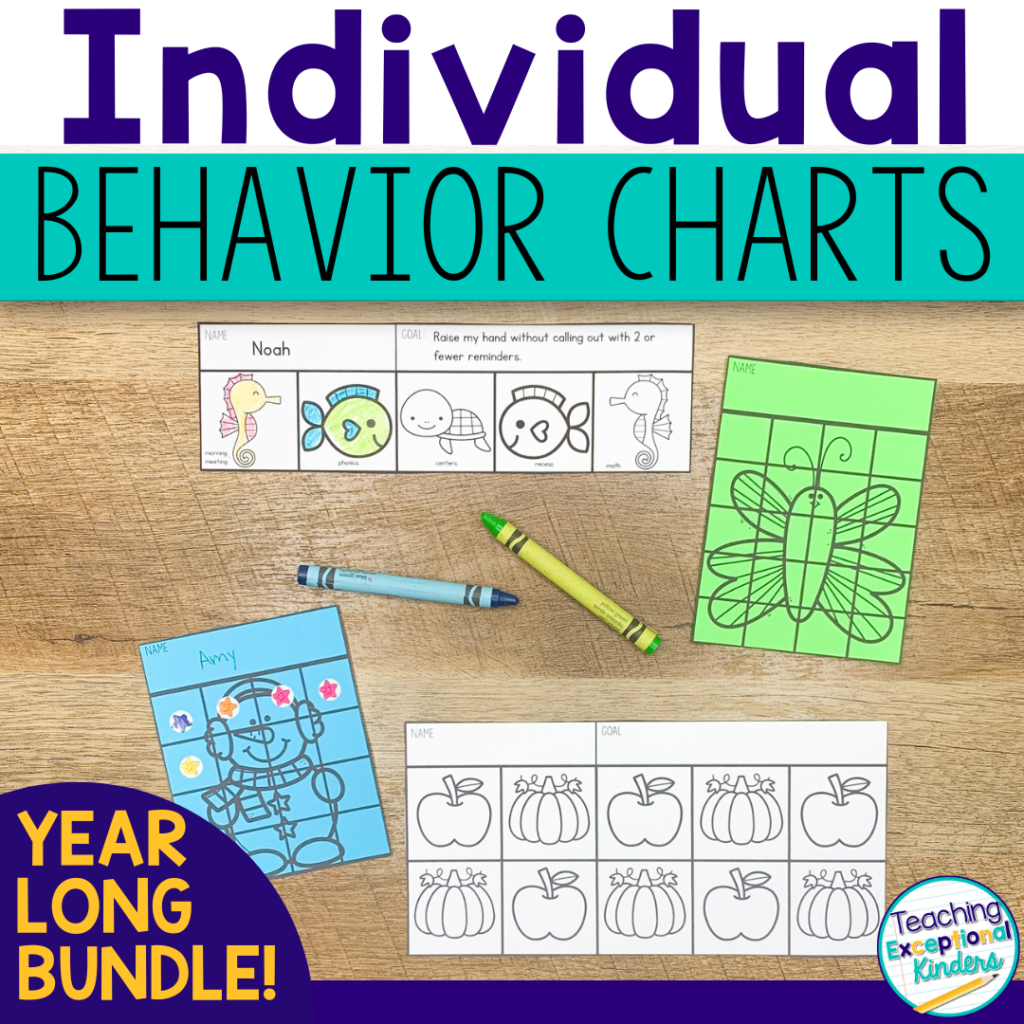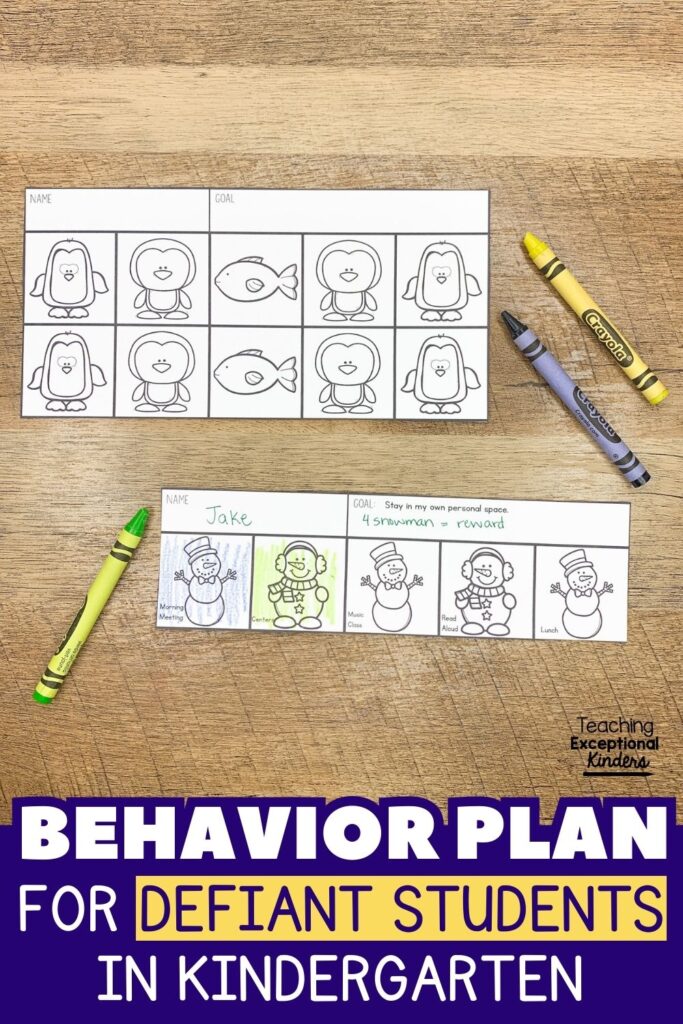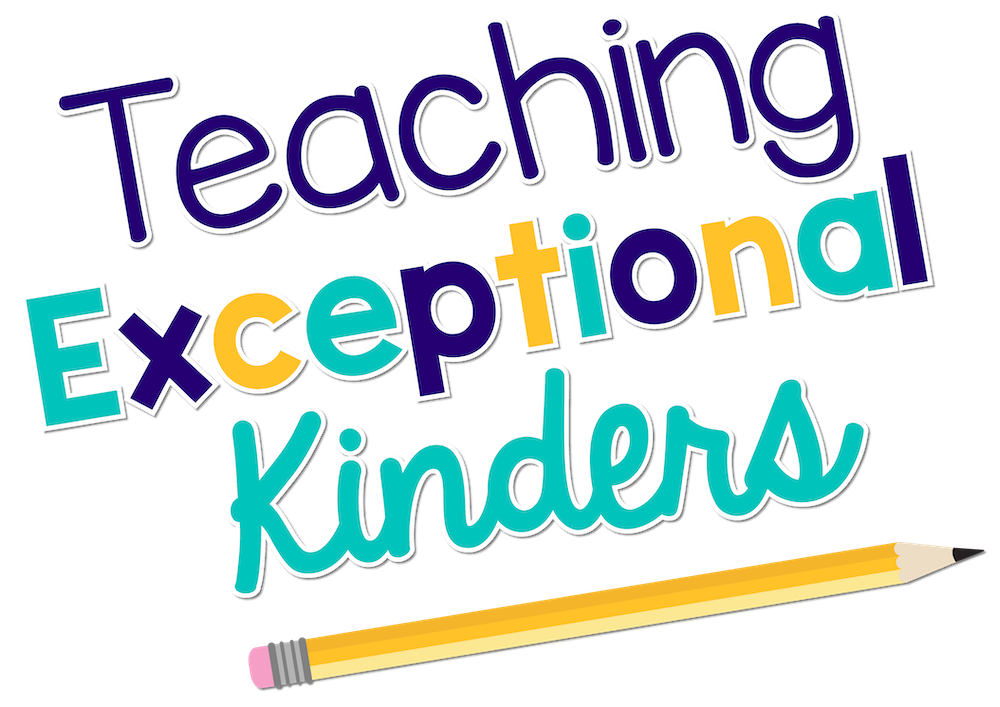Creating a Behavior Plan for Defiant Students
If you have a student who consistently refuses to comply with directions, you know how disruptive it can be to the learning environment. While there are many techniques and strategies for dealing with noncompliance in the classroom, it’s important to find something that works for each individual student. In this post, I’m going to share tips for creating a behavior plan for defiant students in the kindergarten classroom.

The Importance of a Behavior Plan
If you have ever reached out to a specialist for support with a student, you have likely been asked about the strategies you’ve already tried to reduce the negative behavior. Setting up a simple behavior plan for an individual student will either extinguish the defiant behavior or give you important data that specialists can reference as they consider more formal behavior interventions.
An individual behavior plan is a way to teach and reinforce desired behavior in order to eliminate undesired behavior. It should be based on other data that you have gathered about the function of the student’s behavior. There are three main reasons why students refuse to follow directions, so it’s important to figure out what’s driving the behavior:
- Control – Defiant students are often looking to maintain perceived control. They might feel that complying with adult directions is giving away their power.
- Avoidance – Some students just don’t want to do what they’re being asked to do. Whether it’s to avoid something that’s too difficult or just non-preferred, being defiant can be a go-to task avoidance strategy for some students.
- Attention – Defiance often leads to attention from the teacher, even if it’s negative attention. This can be a reinforcing factor for noncompliant and defiant behavior.
Once you feel like you’ve uncovered the root of the student’s negative behavior, you can try some easy-to-implement strategies like visual supports. However, if those aren’t completely addressing the defiance, it’s probably time to create a simple behavior plan.
Creating a Behavior Plan for Defiant Students
When it comes to creating a behavior plan for defiant students in kindergarten, I feel like there are three “must-haves” for it to be effective:
- It MUST Be Simple
- It MUST Be Motivating
- It MUST Be Visual
With those factors in mind, I have found that individual behavior charts (NOT clip charts!!) can be one of the best ways to address defiant behavior in the kindergarten classroom. I’m going to walk you through the process of setting one up for a defiant student.
Step One: Identify the Function of Behavior
As I mentioned above, it’s important to analyze the root cause of the student’s noncompliant behavior before setting up an individual behavior chart. Your approach in creating and implementing the reward system will be different based on whether the student is noncompliant for control, avoidance, or attention.
Step Two: Choose a Simple Reward Chart
The next step is to choose a behavior chart format that is simple and easy to implement in a busy kindergarten classroom. The biggest downfall of any behavior plan is inconsistency! By keeping the behavior chart simple, you are more likely to stick with it.
Step Three: Choose a Behavior Goal and Reward
This next step helps to ensure that your behavior plan is motivating for the student. It’s important to choose a measurable and appropriate behavior goal along with a motivating reward option. Students will know exactly what is expected of them and what they can expect when they demonstrate the target behavior.
For a defiant student, you can choose a behavior goal that relates directly to that undesired behavior. For example, you might choose a goal that relates to transitions or following directions.
The reward that you choose should also relate to the root cause of the defiant behavior. If you suspect that the noncompliant behavior is attention-seeking, your behavior plan could include a reward that provides the student with positive attention from staff or peers (like being the teacher’s helper).
Step Four: Use Visuals
Once you’ve selected the goal and reward, it’s important to use a visual support to track the student’s progress. It’s very motivating for students to see where they stand in their efforts to earn the reward.
One of my favorite behavior charts is this low-prep tracker that students can color. There is space for the goal to be written, which helps with consistency among staff members. As the student demonstrates the desired behavior, they can color in one of the boxes on the chart. Once all of the boxes are colored in, they earn the reward that is also listed on the behavior chart.
Another great option is this cookie sheet token board. Students earn cookie tokens as they work toward the reward that is displayed on the chart. Once the cookie sheet has been filled in, they earn the reward. You can easily mount all of the pieces in a folder so that it can travel with the student, as well.
Printable Behavior Charts for Kindergarten
If you would like to use behavior charts as part of your behavior plan for defiant students, check out this bundle! I have put together a variety of individual reward systems that you can implement in your kindergarten classroom. It’s helpful to have many to choose from in order to find what works best for your students that exhibit defiant behavior.
To take a closer look at all of the behavior chart options, just click below to find this bundle in the Teaching Exceptional Kinders shop or on TPT.

More Tips for Behavior Charts
You can take a closer look at two of these behavior chart options in this video. I also share some additional tips for using these reward systems as part of a behavior plan for defiant students. If you like these quick video tips for teachers, be sure to subscribe to my YouTube channel!
Save These Tips for Defiant Student Behavior Plans
Be sure to add the pin below to your favorite teaching board on Pinterest. You’ll be able to quickly find these tips and resources when you have a student who refuses to follow directions!

Amy
SITE DESIGN BY LAINE SUTHERLAND DESIGNS

